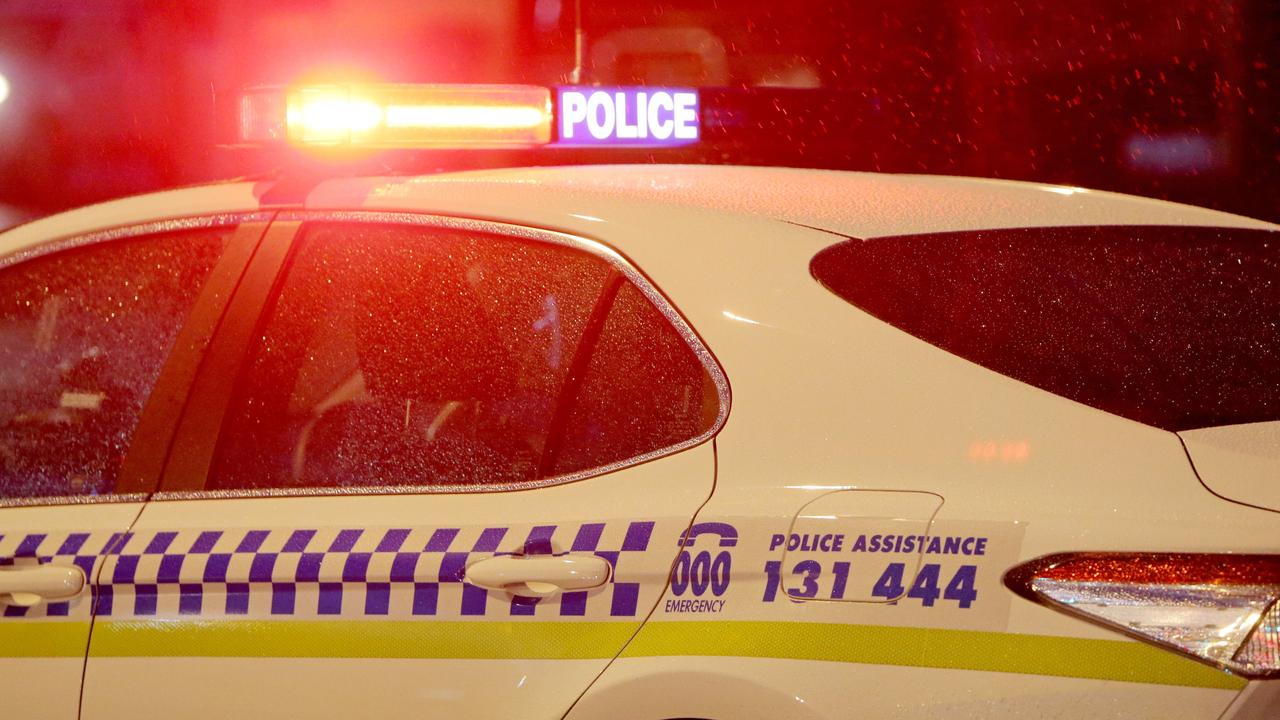Sad mother haunted by what happened to Helen Munnings
AUTHOR Justine Ford delves into the disappearance of Helen Munnings in Burnie in 2008 in her new book Unsolved Australia.
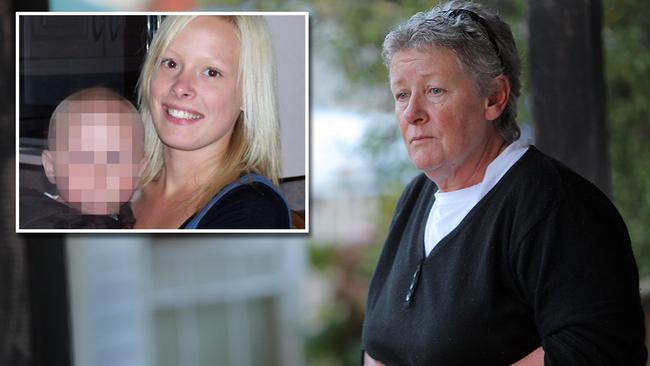
Tasmania
Don't miss out on the headlines from Tasmania. Followed categories will be added to My News.
THE Upper Burnie toilet block might not be the most romantic place to find out you’re in the family way, but judging by the number of pregnancy test kits found there – about 40 a year – it must have something going for it.
It was to this nondescript red-brick building in July 2008 that Helen Munnings, 20, went with the man she loved, Adam Taylor, and learned she was pregnant with her second baby.
Adam, 34, later claimed Helen had conceived the baby after a one-night stand with another man, but everyone who knew her said she only had eyes for him.
What follows are the intriguing details of the police investigation into Helen’s disappearance, as well as the findings of Tasmanian Coroner Robert Pearce, who ruled Helen was dead but was unable to say if she lost her life at the hands of another.
Police remain convinced there are people who know what happened to the young mum. Are you one? Call Crimestoppers on 1800 333 000.
There was something about Adam Taylor. There must have been, because from the moment she met him in August 2004, Helen Munnings was besotted.
“In September or October of that year they had a sexual encounter at the home of a mutual friend,” Mr Pearce revealed in his 2012 record of investigation into Helen’s death.
“He disclaimed responsibility for initiating the encounter, claiming to have been heavily affected by alcohol. He told the inquest that they then became friends but, after she turned 17, she pressed him to commence a sexual relationship.”
On March 15, 2005, Helen turned 17 – the age of consent in Tasmania – at which time she made it clear to Adam, then 31, he was the only man in her sights.
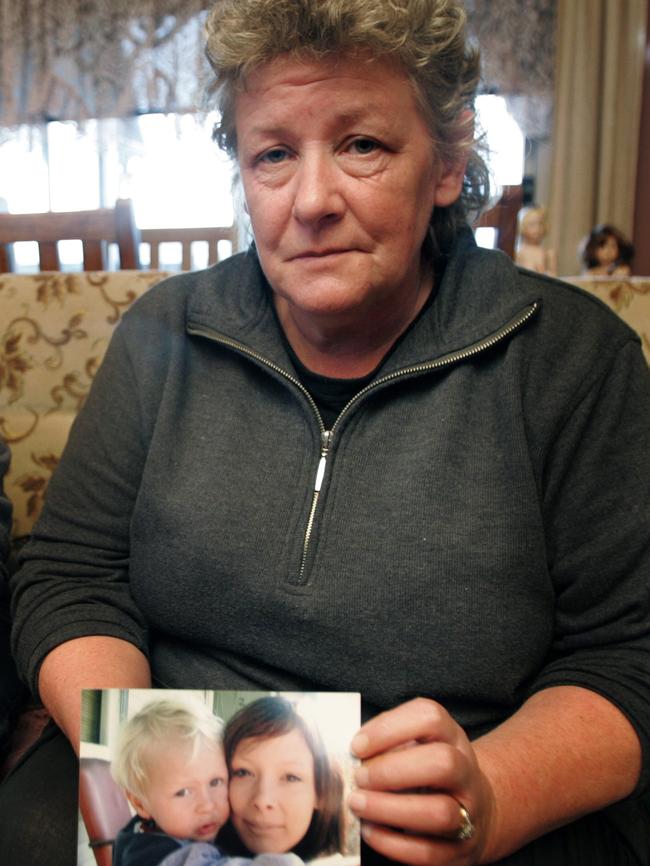
Helen’s mum Karel Munnings made no secret of the fact she disapproved of her budding relationship with Adam, a local tiler, concreter and occasional barman.
It was the age difference that most bugged Karel. She did everything she could to put an end to the relationship.
“She complained and continued to complain to police about Mr Taylor, alleging that he had committed an offence,” the coroner wrote.
“Thus, Helen’s relationship with Mr Taylor was the cause of considerable conflict between her and her mother. They argued and fell out from time to time. Each obtained restraint orders against the other.”
Amid the drama, Helen gave birth to a boy on March 30, 2006, not long after she turned 18.
“Little Donovan was so much loved,” Karel says, recalling how her daughter doted on her son.
At first Adam denied being Donovan’s father, but paternity tests proved otherwise. Still, it took between three to six months for Adam to tell his mother he had fathered a child outside his primary relationship.
Meanwhile, Adam’s partner of 13 years Karalina Garwood – a striking woman closer to his own age, with whom he had two children – believed baby Donovan was conceived while she and Adam were taking a break from their relationship.
As far as she understood, there was no ongoing sexual relationship between Adam and the younger woman.
Even though he wanted to maintain his de facto relationship with Karalina, it’s believed Adam kept in regular contact with Helen. This is despite an agreement that all communication about Donovan be channelled through Adam’s mum after Helen harassed Adam with demanding phone calls and texts.
But instead of sticking to the agreement, Adam bought a second mobile phone, which he used to keep in touch with Helen.
Adam claimed his sexual relationship with Helen stopped after their initial fling, but that they’d hooked up for one more night in 2007.
In his official finding, Mr Pearce said: “He [Adam] said that this was the last time that he and Helen had sex and called it ‘a mistake’, which arose again from pressure from Helen Munnings.
“Nevertheless the evidence discloses a series of messages, some of them of a highly sexualised nature, exchanged between Mr Taylor and Ms Munnings during 2008 and until at least May 2008.
“Mr Taylor admits that Helen frequently sent such messages. He says they were mostly one way but the evidence shows at least some similar responses from him.”
Sometimes Helen sent angry messages, including one in which she told Adam she was going to have the baby and didn’t want his help.
“That message appears to confirm her pregnancy and infer that Taylor is the father,” says detective Senior Sergeant Richard Chugg, from Devonport Criminal Investigation Branch.
Adam initially denied paternity and claimed Helen had conceived the child during a one-night stand. But if that were true, it would have been a big shock to her family and friends, who knew her as a one-man woman.
Some of Helen’s texts might have been acrimonious, but her anger was fuelled by her desire to have an exclusive relationship with Adam, in which they could raise Donovan together.
To discourage Helen from pursuing a committed relationship with the older man, her mum admits she spoke her mind, and didn’t hold back.
“That’s something that eats me away, doing tough love,” Karel says.
“At the time it seemed like the right thing to do.”
But three weeks before she disappeared Helen, who had been living elsewhere in Burnie, moved back in with her mum, who believed the “tough love” technique worked from time to time.
What Karel didn’t realise, however, was Helen had plans to move out again, because before she went missing, Adam was helping her to find a place of her own.
Perhaps Helen had a bright future planned. It was tragic she couldn’t be in it.
On Wednesday July 23, 2008, Helen told her mum she was going to the doctor for a pap smear.
She left home about four in the afternoon and walked towards Burnie’s central business district.
“It was after about an hour that me and Linda – one of Helen’s sisters – thought, ‘Helen is taking a long time’,” Karel says.
“But we just thought she might have bumped into someone she knew.”
Yet Helen’s appointment was not what it seemed.
“It appeared this was a story she told Karel to cover a pre-arranged meeting with Adam, of which her mother would not have approved,” Sen-Sgt Chugg says.
So instead of going to the doctor’s surgery, Helen had organised to meet Adam at the South Burnie park at 4.15pm.
“Adam went to the park and couldn’t see her, so he drove around the Marine Terrace area before he saw her near the Greens Hotel,” the detective says.
“Police obtained footage from the Centrelink office near the Greens Hotel which showed a woman we believe to be Helen walking south past the office on Marine Terrace at around 4.16pm. A ute – which the coroner has accepted was most likely Adam’s – then drove past at 4.21 and returned, heading north, at 4.22.”
It was the last known sighting of Helen Munnings alive.
After Helen disappeared, Adam admitted to police he’d taken her for a drive that afternoon, and detailed the route. He also told police – in a statutory declaration sworn on July 25, 2008 – that during the drive Helen mostly talked about her pregnancy and said she didn’t want to have an abortion.
Adam wrote: “She said she would prefer to kill herself than have an abortion. She had talked about suicide on previous occasions, but I have never taken her seriously because [of] the amount of times she had threatened to do it.”
Adam told the investigators that at the end of their drive, he dropped Helen at the southern side of the Bass Highway near the Australian Pulp and Paper Mill. She told him she wanted to go for a walk and “clear her head”. Adam did a U-turn and returned home. So what happened to her after that?
According to her family, the one thing Helen would never do was abandon her child.
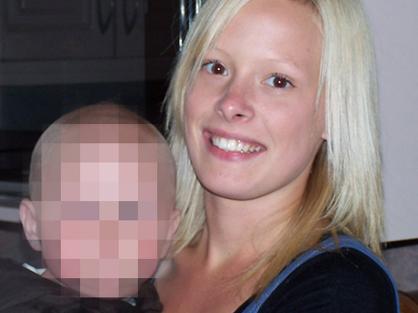
All little Donovan had to do was stir after a nap and Helen would be at his side, announcing to anyone who’d listen that he was awake. She adored him, so when she hadn’t returned home by the following day, Karel reported her missing to police.
Anxious to find her alive, police spoke to everyone in Helen’s inner circle, hoping they might know where to find her. They also launched land and air searches, and trawled the waterways surrounding the windswept coastal town.
“But no evidence of Helen was located during the course of any of the searches conducted in July and August 2008, nor when they were repeated and extended the following year,” Sen-Sgt Chugg says.
Police suspected early on that Helen was dead because since her disappearance she had made no contact with her family or friends; she had not accessed her bank account or any Centrelink payments; and she had not consulted a doctor, despite telling Adam she was pregnant.
On the day she left home to meet Adam, she didn’t even take her handbag or wallet.
There have been no credible sightings of the young mum since and no activity on her mobile phone SIM card either. Nor does it appear that she had found a way to leave Tasmania.
“Travel checks for Helen were conducted with TT-Line and all international and regional airlines,” Sen-Sgt Chugg says.
“All checks have returned a negative result. And there is no information or evidence at this time to suggest she travelled from the state by covert means.”
In any case, Helen’s family and friends couldn’t imagine she would just up and leave.
“A number of witnesses stated that prior to her disappearance Helen appeared normal and would have been unlikely to have absconded without her child or before telling her close family and associates,” Sen-Sgt Chugg says.
So why did she end up a missing person? Could it be that Helen, overwhelmed by unrequited love, took her own life?
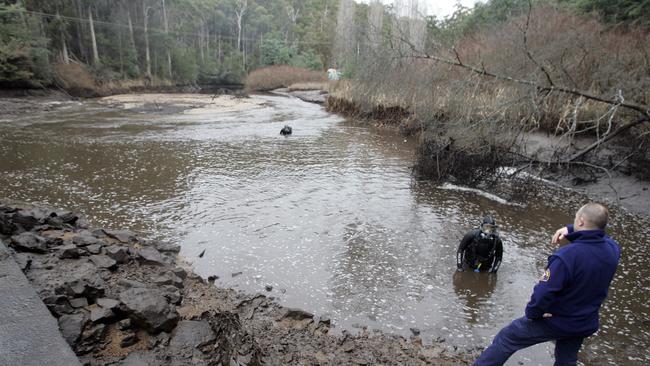
Police were aware that Adam Taylor, believing Helen to be in low spirits the last time he saw her, sent her a text message after he dropped her off. It read: “Keep your chin up.” Helen did not respond.
It meant police could not rule out suicide, although they considered it improbable.
“Information from a number of sources suggests that Helen may have been suffering from depression at the time of her disappearance,” the detective says. But, he adds, the same sources insist “she was unlikely to take her own life” because of Donovan.
Just to be sure, police called in a psychiatrist to examine video footage of the young mum. Admittedly, the psychiatrist could not rule out suicide, but Helen’s GP, who knew her well, said suicide was definitely not on her mind.
Yet with so much coastline around Burnie, police did have to consider whether Helen might have walked into the water to drown herself, even though they found it doubtful.
“Furthermore, on the basis that her remains have not been located, it is unlikely that Helen has suffered an accidental death either,” police said.
Of course the most disturbing scenario, towards which police have been leaning, is that Helen met her end at the hands of someone else.
“Investigators believe that Helen has been the victim of a crime,” Sen-Sgt Chugg says plainly. And that crime, they believe, is homicide.
As you would expect, the detectives investigated those closest to Helen, including her family as well as her love interest, Adam Taylor, who was the last known person to see her alive.
But they didn’t stop there.
“Witnesses numbering the hundreds have been spoken to during the course of the investigation,” Sen-Sgt Chugg reveals.
In 2012, four years after Helen’s disappearance, Coroner Robert Pearce found, however, that there was no direct evidence to suggest anyone had contributed to her death, and it is on solid evidence which coroners must operate.
“One of the issues raised during the inquest is whether I should find that Mr Taylor is a person who contributed to the cause of Ms Munnings’s death,” the coroner said. “The evidence does not justify such a finding.”
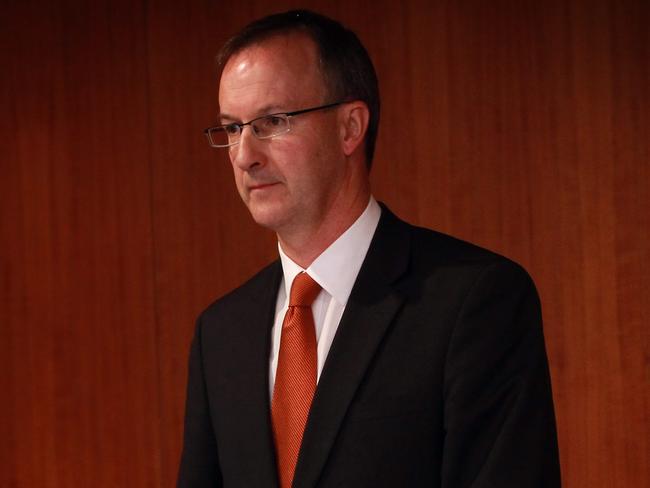
Still he believed some aspects of the evidence surrounding Adam Taylor were worthy of further comment. He found that it was most likely Helen was pregnant and, even if she had lied, it would probably have placed additional strain on Adam’s relationship with Karalina.
Mr Pearce also noted that Adam gave two different versions of the route he took after he picked up Helen and dropped her off, “and there was some question about whether the journey he described would have occupied all the time he was with her”.
He also suggested that what Adam did with a boat after returning home from his drive with Helen might have appeared “incongruous”.
That evening, Adam told Karalina that he thought someone had tried to steal an aluminium dinghy from their yard, and that it had been dragged from its usual position to the water’s edge. Adam told Karalina he was going to drag it back to where it belonged.
“In the course of doing so he put the boat in the water, started the motor of the boat and drove it a short distance before turning and bringing it back in,” the coroner stated, remarking that he did not find Adam’s account far-fetched.
But, in June 2009, during a second search of the ocean below Blythe Heads, divers had made an unusual discovery out the front of Adam’s place.
“A bucket of concrete with a hook in the top and a small rope attached was located in water several metres in front of the Sice Ave home,” Sen-Sgt Chugg says.
“Divers indicated that this was not an area where it would have had a purpose in terms of being a mooring.”
Yet even though it might have looked suspicious, the coroner could not draw any conclusions from the discovery of the bucket. The rope didn’t tell police anything new either because when forensic scientists examined it for human traces, they found none.
In August 2009, police also conducted a thorough search of Adam’s house.
“A substantial amount of rope which appeared to match the colour of that tied to the bucket of concrete was located on the premises and seized,” the officer says.
He knew, however, that any apparent evidence to suggest Adam had murdered Helen, then disposed of her body, was purely circumstantial, and there was nothing to suggest he had dumped evidence, such as clothing or tools, in the water either.
“The dinghy was also the subject of forensic testing,” Sen-Sgt Chugg says, “but with no result.”
He can now tell readers of Unsolved Australia that he doubts Helen’s remains are in the water at all. Due to the sensitivity of the matter, he cannot go into detail, but, he says, “based on other known facts which police uncovered during the investigation, I find it more likely that Helen’s remains were disposed of on land”.
But where? And by whom?
At the inquest on June 14, 2012, Mr Pearce found that Helen had died on or about July 23, 2008, in or near Burnie.
“No finding can be made about how or why she died,’ he said. “Or whether any person contributed to the cause of her death.” He also suggested the case remain open.
So who can help?
“It is considered likely that a very small group of people know the truth, and to date, they haven’t been able, or haven’t seen fit, to come forward,” Sen-Sgt Chugg says.
“But we remain confident that will occur in the future, for Helen’s sake.’”
When someone goes missing under suspicious circumstances, there is inevitable fallout.
In this instance, Adam Taylor and Karalina Garwood have split up. Meanwhile, Judy Taylor, Adam’s mum, is understood to be raising Donovan.
Karel Munnings cannot move on until she finds out exactly what happened to her missing daughter. She is convinced, however, that Helen has met with foul play.
“When something like this happens, at the beginning, you’re devastated, and as time goes on you get angrier,” she says. “I just want anyone with information to come forward. I don’t think it’s unreasonable to expect justice.
Police are offering a $50,000 reward for information about the disappearance of Helen Munnings. A Burnie businessman, who wishes to remain anonymous, has offered a further $50,000.
Extract from Unsolved Australia, by Justine Ford, Macmillan Australia, RRP $32.99


